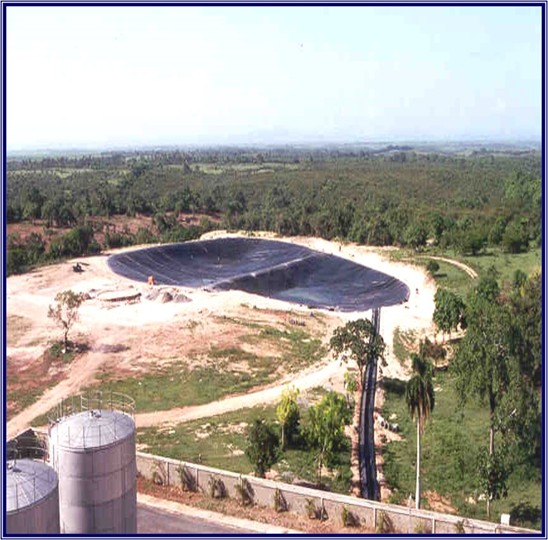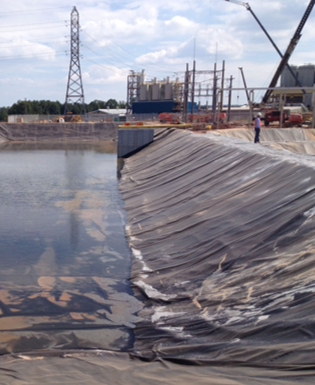Contributed by XR Geomembranes
The management of effluent discharge is an important consideration in the environmental impact of wastewater treatment. Geomembrane liners are one of the most effective tools in managing the highly regulated discharges from various sources, with decades of installation examples to demonstrate their effectiveness.

Material manufacturers publish data to support the differentiated solutions of competitive material types allowing owners and specifying engineers to select the best material for a given installation. However, data is not routinely provided for elevated, or for that matter, lower, temperatures. Should that be a concern?
First, where are we likely to find geomembrane applications for elevated temperature containment?
Oil and Gas
Production including fracking
Evaporation ponds
Oil/Water separators
Process wastewaters
Some product storage
Desalination
Industrial wastewaters
Food processing wastewaters
Energy
Boiler blow-down
Geothermal
Dielectric oil containment (transformers)
Obviously, this list is broad and is general in that only some of these applications may produce liquids that will be at elevated temperatures.
Chemical reaction rates can be influenced by several factors:
Reactant concentration – A more concentrated solution will have a higher reaction rate due to the amount of reactant present.
Physical state of reactants – More dispersed reactants are more available as opposed to those with less surface area.
Influence of a catalyst or inhibitor – The presence, type and concentration can speed or inhibit reactions.
Light – Some chemicals are influenced by certain wavelengths.
Temperature – Most reactions are faster with increasing temperature; most are slower with decreasing temperature. The rule of thumb for laboratory reactions is there will be an approximate doubling of reaction rate with a 10o C increase of temperature, which would imply the opposite with decreasing temperature.

It is acknowledged in the geomembrane industry that applications with elevated temperatures are more aggressive and may result in shorted membrane life. Consider the ways the geomembrane receives the heat:
Air – Normally only a laboratory test but it could be hot air from an industrial process.
UV – Sunlight-induced which will be higher with darker colored geomembranes. While we have measured black XR-5 at 180o F in Idaho and Texas, on slopes, that temperature loading is cyclic and is independent of any solution-induced reactions.
Water only – This water can be somewhat purified in the event of a boiler blowdown or can be part of a cooling system.
Water-based mixed solutions – These are commonly encountered, higher temperature applications.
UV with non-elevated liquid beneath – These applications are primarily floating covers over liquids contained in impoundments or tanks. Most geomembranes are poor conductors of heat and poor insulators as well. So, UV-induced surface heat will transmit minimal heat to the liquid-geomembrane interface under the floating cover.
Pure solutions – Storage tanks are sometimes heated to maintain contents in a liquid state and a geomembrane may be used under the floors of heated tanks such as those storing bitumen.
An elevated temperature usually adds another layer of complexity when evaluating geomembrane containment systems. In addition to uncertainty regarding chemical resistance, there is now another complex factor driving the need to understand the source, the application and the purpose of the containment and the geomembrane itself.
In part two of this series, we will look at the top considerations when selecting and designing a geomembrane system to handle elevated temperature containments.
For more information on the XR-5 Geomembrane, visit www.xrtechnology.com
 TEXTILES.ORG
TEXTILES.ORG


